
On April 23, 2025, 2025 2nd International Conference on Machine Learning and Neural Networks was successfully held at the Yifu Science and Technology Building Auditorium of Chongqing University of Posts and Telecommunications (CUPT)! Over 100 experts and scholars participated in the conference in person, sharing and discussing the latest research achievements.
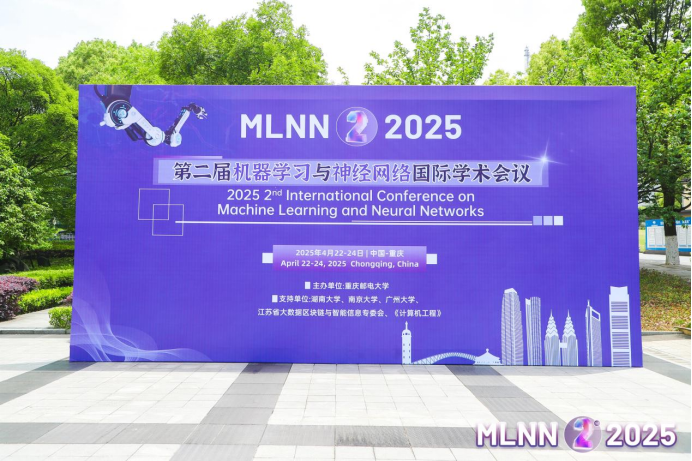
Conference Scene
This conference was organized by Chongqing University of Posts and Telecommunications, with support from Hunan University, Nanjing University, Guangzhou University, the Jiangsu Provincial Special Committee on Big Data, Blockchain, and Intelligent Information, and the journal Computer Engineering. The honorable chairs of the conference included IEEE Fellow and President of CUPT, Professor Gao Xinbo, as well as IEEE Fellow and Professor Schahram Dustdar from Vienna University of Technology. Participants focused on academic trends and future developments in various research areas related to machine learning, neural networks, cybersecurity, and communications, which are key components of next-generation artificial intelligence technologies. They discussed current hot topics, shared research outcomes, and contributed to the construction and high-quality development of characteristic demonstration colleges and disciplines in cyberspace security and information law. The conference also aimed to promote the prosperity and advancement of related research and applications.
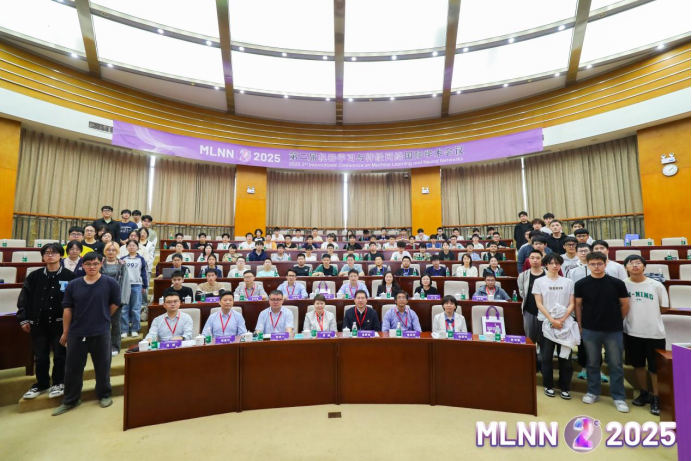
Group Photo
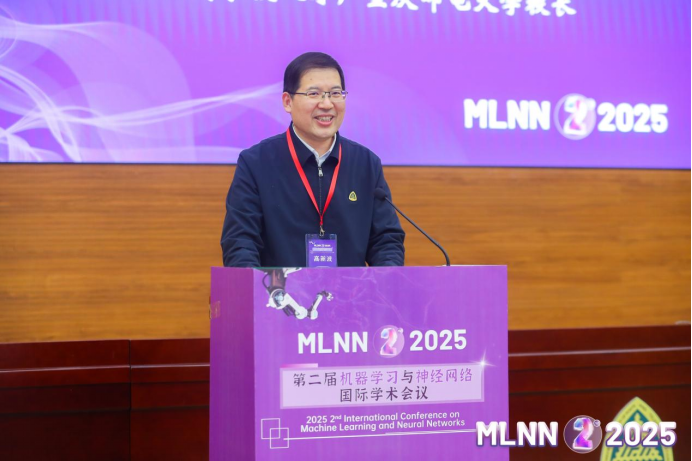
Opening Remarks by Professor Gao Xinbo, President of Chongqing University of Posts and Telecommunications
Professor Gao Xinbo, President of CUPT, delivered the opening speech. He emphasized that high-quality international conferences not only provide a platform for communication and exchange among researchers and experts in relevant fields but also effectively promote the development and construction of academic disciplines. He expressed hope that this conference would establish a cutting-edge and open international academic exchange platform to collectively advance research and development in the field of artificial intelligence.
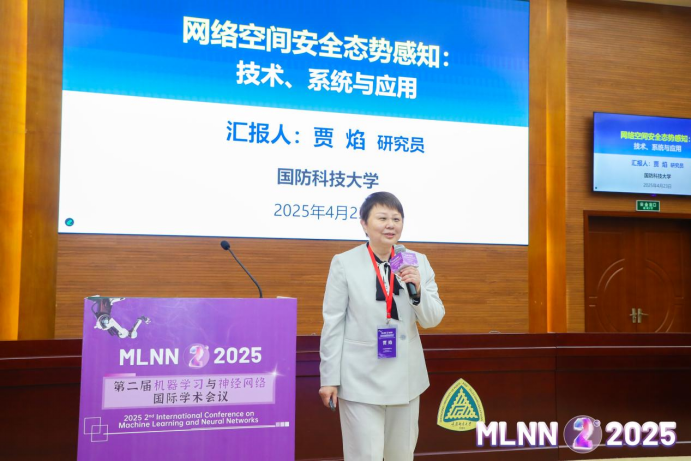
Prof. Yan Jia, National University of Defense Technology
Title:Cyberspace Security Situation Awareness: Technology, Systems, and Applications
Prof. Yan Jia began his presentation by introducing the concept and significance of cyberspace security situation awareness. He outlined three major application demands: content security public opinion event situation awareness, system security attack event situation awareness, and offensive-defensive confrontation situation assessment. He also identified three key challenges: accuracy, real-time processing, and comprehensiveness. To address these challenges, he proposed the multi-dimensional associative cognition model (MDATA) and its advanced technologies. Finally, he demonstrated the application and effectiveness of the related theories and technologies.
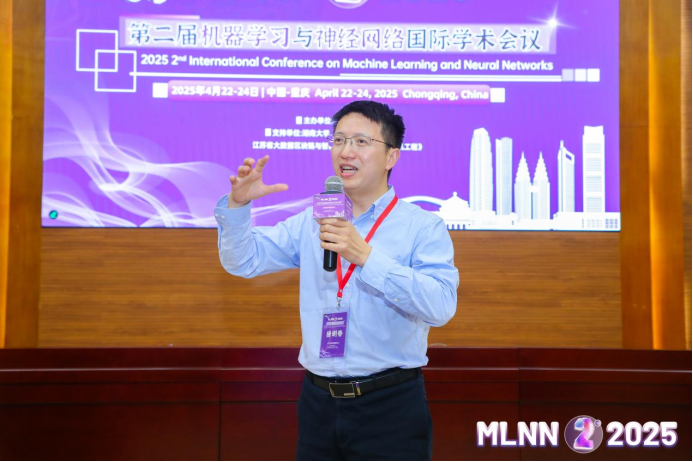
Prof. Mingchun Tang, Vice Dean of the School of Microelectronics and Communication Engineering, Chongqing University
Title: High-Gain Electrically Small Antennas and Their Dense Arrays
Prof. Mingchun Tang reported on the recent research progress of his team in the field of high-gain electrically small antennas and their dense arrays, covering fundamental theories, design principles, and engineering practices. High-gain electrically small antennas, with their unique advantages such as electrically small size, high efficiency, high gain, and wide beam directional radiation, have attracted significant attention in recent years.

Prof. Hongyu Zhang, Dean of the School of Big Data and Software Engineering, Chongqing University
Title: ntelligent Software Engineering – Progress and Challenges
Title: Intelligent Software Engineering – Progress and ChallengesProf. Hongyu Zhang introduced the research journey and challenges in the field of intelligent software engineering. He explained how large-scale software data (such as source code, system logs, historical faults, and measurement data) can be analyzed to build intelligent models based on machine learning, enabling automation in programming, testing, fault diagnosis, and maintenance. This approach aims to improve software development productivity and reduce system maintenance efforts, thereby advancing intelligent software engineering.
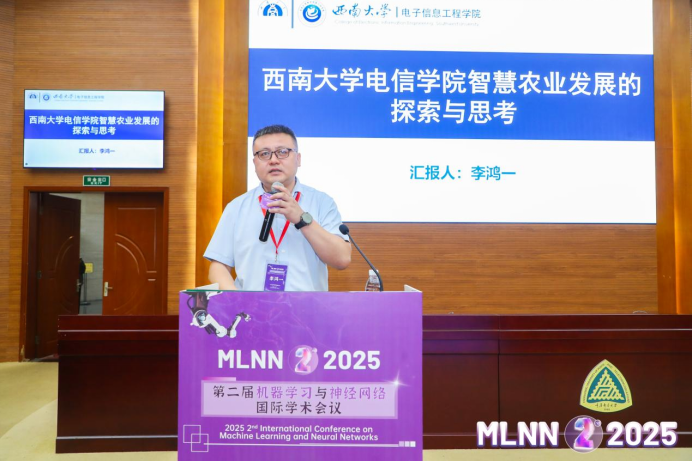
Prof. Hongyi Li, Dean of the School of Electronic and Information Engineering, Southwest University
Title: Exploration and Reflection on the Development of Smart Agriculture in Southwest University’s School of Electronic and Information Engineering
President Xi Jinping once emphasized the importance of using modern information technologies such as the Internet of Things (IoT) and big data to develop smart agriculture. Smart agriculture is a crucial focus for modernizing agriculture and a strategic high ground for building a strong agricultural nation.Prof.Hongyi Li presented the latest research achievements of Southwest University’s School of Electronic and Information Engineering in smart agriculture, tailored to the needs of Chongqing’s unique mountainous agricultural landscape.
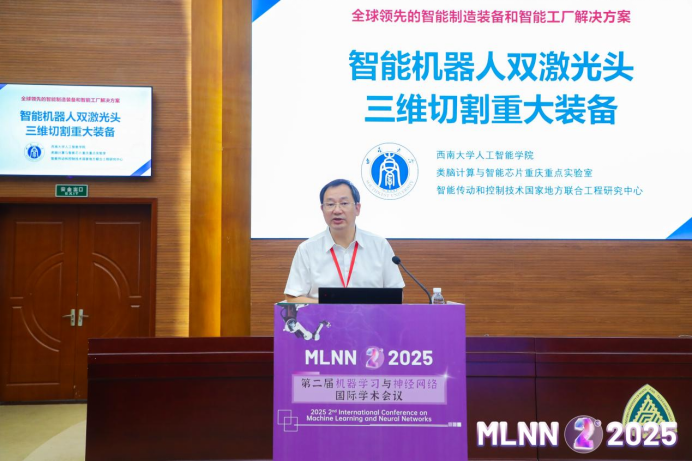
Prof. Shukai Duan, Dean of the School of Artificial Intelligence, Southwest University
Title: Ada-iD: Active Domain Adaptation for Intrusion Detection
Prof. Shukai Duan introduced the application of vision-based intrusion detection in security, intelligent monitoring, and autonomous driving. Previous studies improved intrusion detection performance in unknown environments by introducing unsupervised domain adaptation (UDA) methods. However, due to the performance gap between UDA and fully supervised methods, these approaches cannot fully meet practical requirements. To address this, he proposed the active domain adaptation task for intrusion detection, named Ada-iD, which aims to query and annotate the most informative samples in the target domain at the lowest possible cost. The goal is to balance high performance with low annotation costs.

Prof. Xichuan Zhou, Party Secretary of the School of Microelectronics and Communication Engineering, Chongqing UniversityTitle: Research on Wireless OpticalSwitching Mechanisms Based on Passive Metasurfaces
Intelligent remote sensing satellites are a current hotspot in research both domestically and internationally. However, high-throughput remote sensing satellites, such as hyperspectral ones, typically have data throughput rates in the Gbps range. This poses challenges due to limitations in satellite payload computing power, communication capabilities, and signal quality, resulting in issues like slow model computation, incomplete data transmission, and unclear target identification during in-orbit high-throughput image processing. Professor Zhou Xichuan systematically introduced his team’s exploratory research in this field, focusing on integrated sensing, computing, and transmission challenges for low Earth orbit satellites. He discussed innovative solutions in onboard high-throughput intelligent chip design, high-efficiency brain-inspired model optimization, and semantically lossless image compression.

Prof. Weigang Hou, Deputy Director of the Institute of Intelligent Communication and Cybersecurity, Chongqing University of Posts and Telecommunications
Title: Research on Wireless Optical Switching Mechanisms Based on Passive Metasurfaces
Prof. Weigang Hou focused on the parallel beam control mechanism of passive metasurfaces and their applications in satellite-based switching, industrial inspection, and data centers. He aimed to fully leverage the potential of wireless optical switching technology while mitigating its limitations. By taking passive parallel control as the main thread, he designed phase gradient metasurfaces and dielectric metasurfaces, and proposed a series of solutions, including high-reliable wireless optical switching for satellites based on phase gradient metasurfaces, wireless optical switching for industrial inspection based on phase gradient metasurfaces, and wireless optical switching for data centers based on passive metasurfaces.
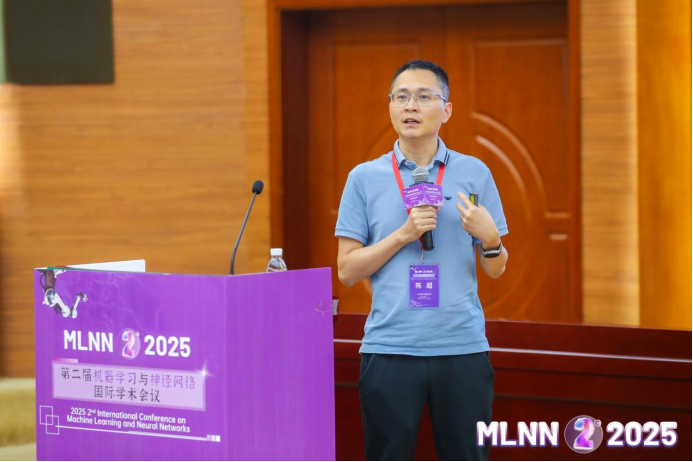
Prof. Chao Chen, Chongqing University
Title: Learning Based on Urban Spatio-Temporal Data
Professor Chen Chao’s presentation centered on representation learning in urban computing, addressing key challenges such as semantic modeling of complex road networks and capturing multi-level relationships within regions. He introduced solutions including semantic-aware road network representation learning, joint representation learning of road networks and trajectories, regional representation learning, and joint learning of regional partitioning and representation.